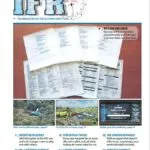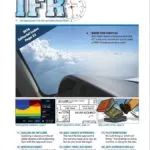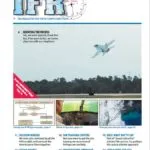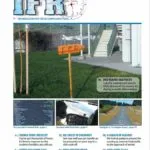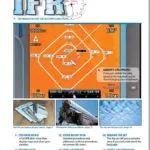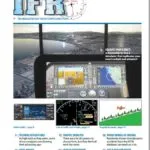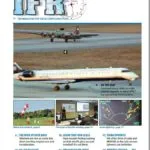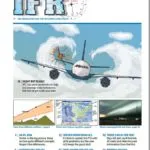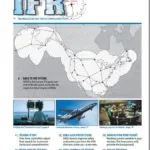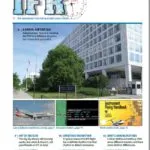Download the Full January 2017 Issue PDF
Unless youve already made your own checklist(s), chances are youll want to add a few items to what youve got so far. Say you mostly fly IFR. Youll want IFR-specific items in your checklists. So, consider adding items for flight plan (checked), departure briefing, approach briefing, etc. Or, perhaps youve found that turning off your fuel pump during the After Takeoff check is something you often forget. Consider making a redundant entry in the Cruise check.
Download the Full December 2016 Issue PDF
The multiple steps involved in filing NOTAMs and PIREPs can steal time from a controllers main purpose of separating aircraft. From their first transmission as a trainee, controllers have the term priority of duty bashed into their head. Allowing two aircraft to get too close because you were distracted by a PIREP or a NOTAM is not an option.
Download the Full November 2016 Issue PDF
For jets over 75,000 pounds, many airports urge pilots to use Noise Abatement Departure Profiles (NADPs). There are two detailed in FAA AC 91-53. A Close-in Community NADP is intended to provide noise reduction for noise sensitive areas located in close proximity to the departure end of an airport runway. A Distant Community NADP has less stringent requirements since the noise-sensitive areas are further away. Each specifies thrust settings, speeds, lift device settings, and altitude goals, all designed to maximize climb rate and minimize disturbances.
Download the Full October 2016 Issue PDF
In fact, since many pilots learned to do things with canned checklists from the very beginning, they go about things following rote instructions rather than practicing a higher level of understanding and cockpit resource management. Later on, this can make training for advanced aircraft more challenging, since pilots must then adapt to the other methods well discuss below. Note that were not talking about eliminating checklists insofar as written guidance to structure your operations.
Download the Full September 2016 Issue PDF
From a flight plan perspective, waypoint sequencing is suspended at the hold waypoint. Thus, the CDI is always showing an error relative to the inbound course. But, as you near the hold and for each turn in the hold, you get an annunciation telling you what to do. In addition, if you have GPS steering to your autopilot, the autopilot will fly the hold, even though the CDI shows a large error on the outbound leg. While creating the hold is straight forward, there are some nuances to exiting the hold. If you select the hold from the flight plan, you have an option to simply, Exit Hold. Selecting this will have you complete the present circuit and then proceed to the next leg.
Download the Full August Issue PDF
If you need realistic switches and levers in realistic locations, youll need a bigger budget. Much bigger. Flight Training Devices (FTDs) put actual avionics, or near-exact replicas thereof, in realistic cockpits. If one of these sims offers a G1000, thats a real G1000 display. The Level simulators at the sim centers and airlines are of this type. These can cost as much as many airplanes (like $250,000 and up). In partnership with a flight school that might work, but its not what most of us put in our basement.
Download the Full June 2016 Issue PDF
Practice doesnt always require actual performance-it can be as simple as mentally reviewing the steps. Precision (and, as well see, CDFA non-precision) approaches provide time to accomplish a go-around review. Intercepting glideslope at 1500 feet AGL provides time to establish a descent and review a go-around before counting down to minimums.
Download the Full May 2016 Issue PDF
After nearly 10 years of lobbying by general aviation advocacy groups, the FAA in March released a draft proposal aiming to overhaul light aircraft certification. Proponents say the changes would cut costs to certify new models and also bring new, safer technologies to the market faster. This proposal would benefit manufacturers, pilots, and the general aviation community as a whole, said U.S. Transportation Secretary Anthony Foxx. The proposal affects airplanes with up to 19 seats and a maximum takeoff weight of 19,000 pounds. Comments were accepted for 60 days; the FAA will consider all input before issuing a final rule, perhaps by the end of this year.

